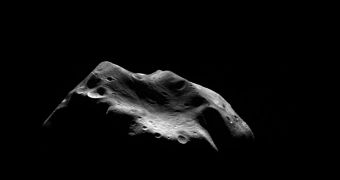In a study that could help unlock the secrets of some of the weirdest meteorites in the solar system, a group of investigators has recently determined that the asteroid 21 Lutetia may still retain a core of molten metal some 4.5 billion years after it was formed.
This discovery could have considerable implications for understanding how Earth formed as well. The space rock is the only one for which investigators proposed the existence of a molten core thus far.
At the same time, more in-depth studies of the object could lead to a better understanding of the conditions that permeated the solar system during its earliest days. It's these circumstances that led to the current configuration of all planets, asteroids and comets surrounding the Sun.
Experts conducted this research using data collected in 2010 by the European Space Agency's (ESA) Rosetta spacecraft, which flew past 21 Lutetia. The prove is headed for the comet 67P/Churyumov–Gerasimenko, which it is scheduled to start analyzing in November 2014.
One of the main discoveries that the spacecraft made was that the asteroid was tremendously dense, even if it retained a porous surface structure. According to planetary scientists, the most likely explanation is that the object has a very thick core, such as one made out of molten metal.
If these conclusions are confirmed, then 21 Lutetia may be an example of arrested planetary development. This process causes forming protoplanets to stop growing during the early stages of their development, Space reports.
Experts say that weird magnetic meteorites discovered on Earth could also be explained through the presence of stunted protoplanets in the solar system. A molten iron core would undoubtedly be able to create magnetic field line, maybe even low-intensity magnetosphere.
“The asteroid belt may be more interesting than it seems on the surface,” Massachusetts Institute of Technology planetary scientist Benjamin Weiss explains. He adds that the object is located in the Inner Asteroid Belt (IAB), between the orbits of Mars and Jupiter.
Details of the new investigation are published in the October 28 issue of the top journal Science. Experts propose that “there is a whole spectrum of strange planetary beasts that formed in between primordial and fully differentiated bodies,” Weiss says.
This could be proven by the studies the NASA Dawn space probe is carrying out around the giant asteroid Vesta, which is also located in the IAB. Astronomers suspect that this body is a stunted protoplanet as well, although that has not been established as a fact just yet.

 14 DAY TRIAL //
14 DAY TRIAL //